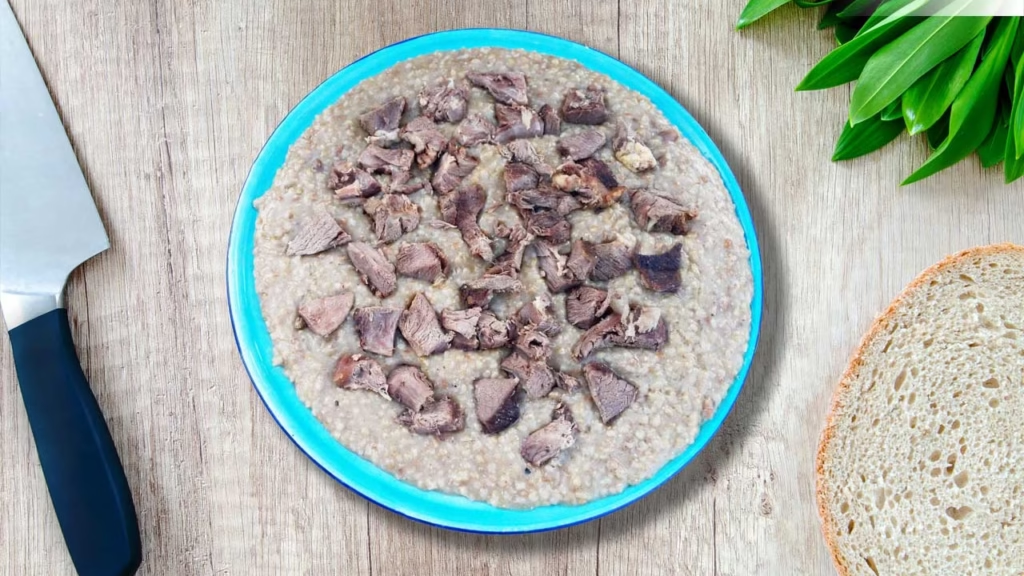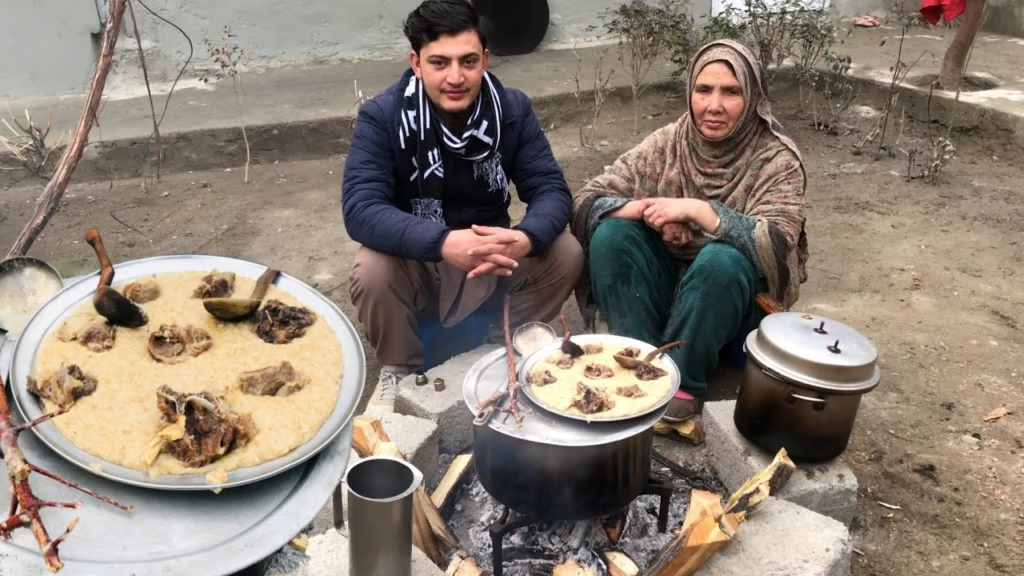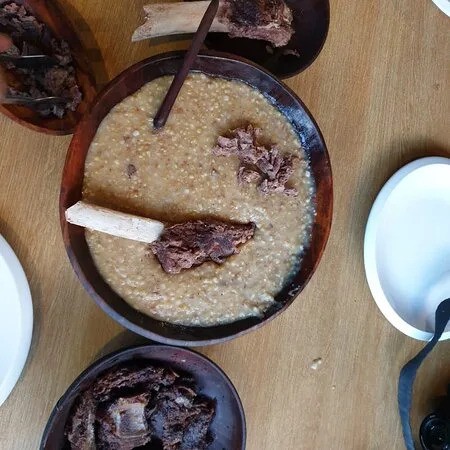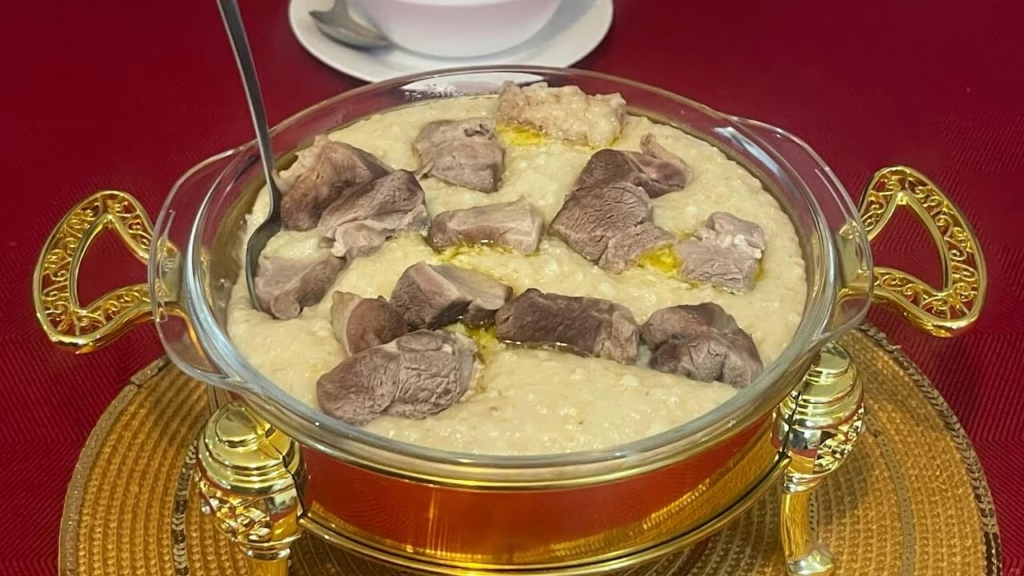“Harisa isn’t just food — it’s comfort in a bowl, slow-cooked with love, memories, and mountain soul.”
Harisa is one of the most iconic traditional foods of Gilgit-Baltistan, especially relished during cold seasons and festive occasions. This hearty dish blends cracked wheat, meat, and local spices, simmered for hours to create a rich, porridge-like consistency that’s both nutritious and deeply satisfying.
🏔️ Cultural Roots of Harisa in Gilgit-Baltistan
Originally introduced through Persian and Kashmiri influences, Harisa has become a cherished dish across Baltistan, Skardu, Ghizer, and other valleys. It’s commonly shared in large family gatherings, during religious celebrations, or as a comfort meal on snowy days.
In many parts of Gilgit-Baltistan, locals gather around a clay stove (tandoor), enjoying Harisa with home-baked bread or butter naan.
🍲 What Makes Harisa Special?
🌾 Cracked Wheat: The main base ingredient, slowly cooked until creamy.
🥩 Meat (Mutton/Beef/Chicken): Adds flavor and protein.
🧂 Local Spices: A warm blend of garlic, black pepper, salt, and ghee.
🪵 Slow-Cooked: Traditionally cooked for 4–6 hours over wood-fired heat.
👩🍳 How to Make Harisa – Step-by-Step Recipe
Step 1: Soak & Prep Wheat
- Soak cracked wheat overnight.
- Drain and keep aside.
Step 2: Cook the Meat
- Boil mutton or beef with salt, garlic, and pepper.
- Shred the meat once tender and keep the broth.
Step 3: Simmer the Harisa
- In a large pot, add wheat and broth.
- Cook on low flame for 3–4 hours, stirring often.
- Add shredded meat gradually.
Step 4: Blend for Smooth Texture
- Use a wooden masher or hand blender to get a creamy consistency.
Step 5: Temper and Serve
- Heat ghee, add fried onions and spices.
- Pour over Harisa and serve hot with naan or kulcha.




👉Watch the full Harisa recipe on YouTube!
🥄 Serving Suggestions
- Top with ghee or butter for extra richness.
- Pair with apricot chutney or green tea (Namkeen Chai).
- Garnish with crispy onions and a dash of chili oil for a modern twist.
👵 From the Kitchen of Gilgit’s Elders
Women across Gilgit-Baltistan have passed this recipe down through generations. In Skardu and Ghizer, you’ll still find elderly women using traditional clay pots and slow-burning stoves to make Harisa — preserving both flavor and culture.
